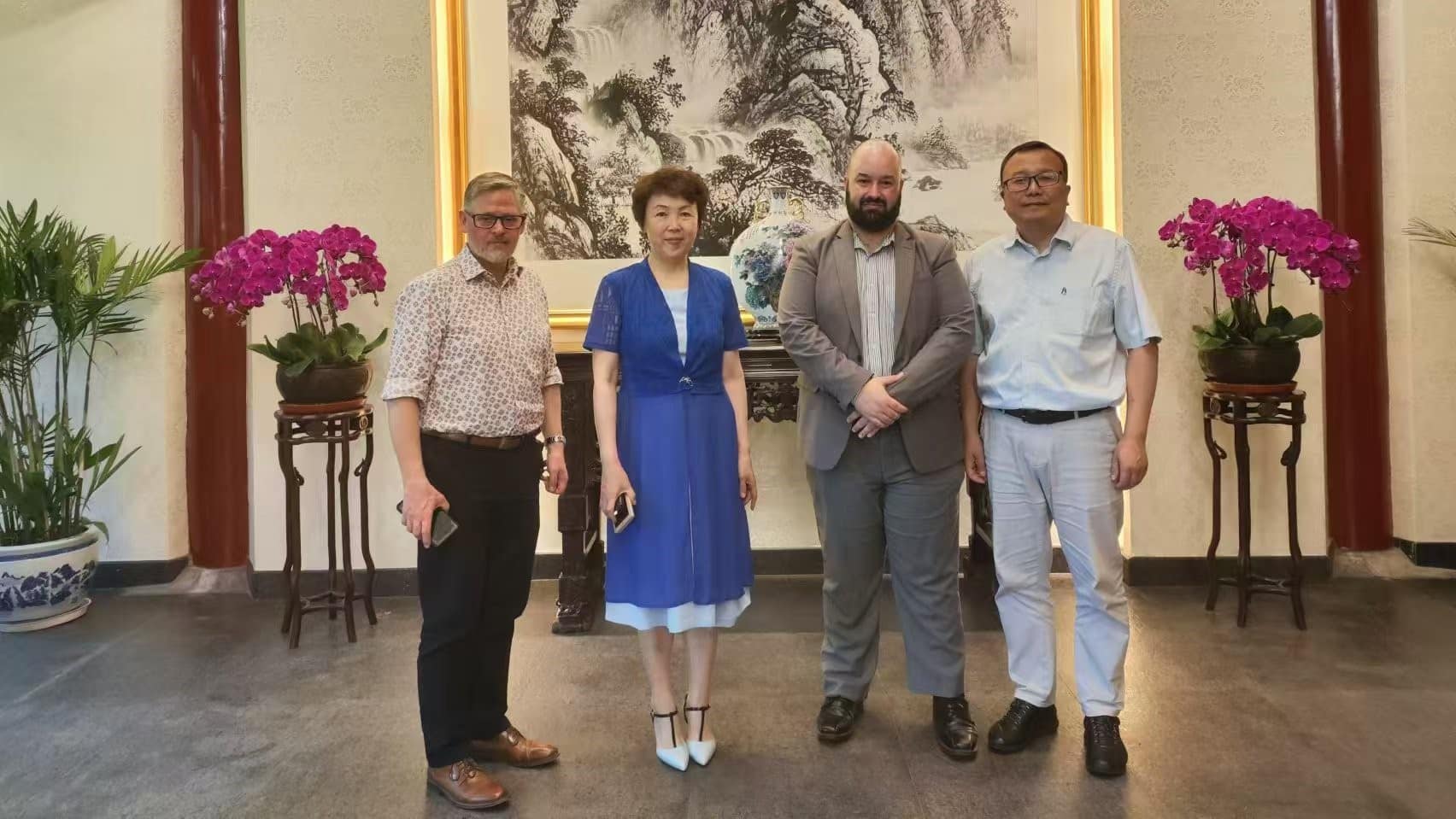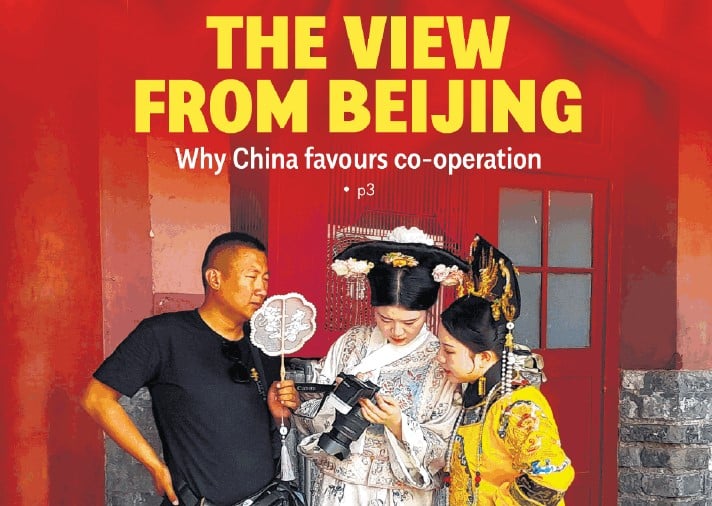Running out of patience
An important nation denied membership in economic and political alliances will be forced to seek alternative allies or, if it has the means, to develop in itself what it originally sought through partnership. In doing so, it may become stronger and more independent than those that tried to exclude it. China is becoming such a nation.
The Asian Infrastructure Investment Bank (AIIB), launched last year, aims to complete formalities to become operational by the end of 2015. The first applicants to join the bank included India, Thailand, Malaysia, Singapore, the Philippines, Pakistan, Oman, Qatar, Sri Lanka, Uzbekistan, and Vietnam. New Zealand was the first developed Western nation to apply to join, and in recent months, a flood of Western nations have applied, including Germany, Australia, and the United Kingdom. The United States has resisted the idea of the bank, claiming that the International Monetary Fund (IMF), World Bank and Asian Development Bank (ADB) adequately meet the needs of the Asian region, and that governance within the AIIB would be inadequate. But in much of Asia, existing institutions, particularly the IMF, are perceived as extensions of American influence; the early applicants to the AIIB hope that it will be a more straightforward institution to deal with. The United States has been pressuring its allies not to join the bank but failed in nearly all cases, rebuking Britain when it announced its intentions to apply. Even Taiwan has applied to join, causing consternation among the harder-line proindependence politicians. Japan has yet to confirm its intentions, but Tokyo’s ambassador to Beijing indicated that Japan may join in a few months once it understands how the bank will be governed.
It is worrying for the world that American policymakers should be capable of making such outrageous errors and scoring own-goals, such as its decision to bet against China over the AIIB, and losing so spectacularly and humiliatingly in the process.
Hong Kong-based economic strategist
China has committed to capitalising the bank with between USD 50 and 100 billion. The eagerness of the more than 50 applicants to date demonstrates China’s international influence and the diminished economic power of the United States. The US struggles with its conflicted relationship with China as never before. Both countries depend on each other economically, with the US continuing to pursue its strategy of balancing political containment and economic engagement. If the US could acknowledge the economic needs it shares with China and exchange its containment policy for one of more proactive regional engagement, it would have a better chance of maintaining its influence in the region.
As the largest economy in Asia, China has tried to participate more in the Japanese-dominated ADB, but with Japan wielding twice the votes of China, the bank’s president will always be Japanese. The IMF has also denied China a larger role, despite China’s requests in recent years that the IMF accelerate its contributions to global economic governance. If the US and its allies are unwilling to reform the multilateral institutions under their control, their regional influence will continue to decline. The West as a whole is still wounded by the Global Financial Crisis and struggling with ongoing recession, while doing too little to change the banking practices that caused the crisis. Until fundamental changes are made, the world remains at risk of further financial instability. China and the developing world have decided they cannot afford to wait.
The AIIB will give China the ability to direct funds to countries it relies upon for resources and as growing markets for its goods and services. China’s economic boom years have left it with excess capacity in cement, glass, iron and steel, and an opportunity to use this inventory will help its domestic economy. One of the AIIB’s first recipients may be Laos, for China is keen to assist construction of the Laotian section of the Kunming-Singapore Railway. China’s unilateral loans and aid to developing countries in recent decades has caused discomfort among Western nations, particularly those in NATO. The AIIB affords China the opportunity to appear less directly influential on the economies of its developing-nation trading partners, and allows it to deflect criticism that it has exploited the dependence of its weaker partners to create a regional sphere of influence. As long as China remains the bank’s most significant funder and retains a level of control over its regulation and the terms and conditions of its loans, the AIIB will be an extension of Chinese economic power. But the measure of the AIIB’s success will be not the degree to which it empowers China alone, but the extent to which China uses the bank as a means to empower other nations. If China can ensure the AIIB serves more than its own interests, it will exceed the influence of the IMF, ADB and the World Bank in Asia.
There are risks, but China wants to prove that it has the experience and skill to guide the AIIB using best international practices. It has studied the other international financial institutions and will emulate some of their systems. Alarm in the West over the bank’s establishment will pass. It will not compete directly with the range of activities of the ADB, World Bank and IMF, as the initial focus of the AIIB will be infrastructure investment. No country in the region other than Japan has China’s means to take on large infrastructure projects. The AIIB will service a sector to a degree that the other institutions cannot.
Beijing banking-regulation official
China is taking a risk establishing the AIIB, as it will come under close scrutiny from critics looking for any sign of partisanship, corruption and coercion. But some Chinese bankers have worked for the World Bank for the last 20 years and their considerable experience will be used in the formation of the AIIB. That the Chinese Government is confident enough to embark on a project of this scale is a sign that, while it may be struggling to balance aspects of its own economy, it can afford to take a leadership position in the region and shoulder the financial obligations and the focus required to manage the bank.
Property still a concern
The real-estate sector has dominated the news for the past 12 months, accounting for 15% of China’s GDP. Some analysts put it as high as 20%. Real estate is widely used by companies as collateral for loans and is therefore a vital part of the commercial financial system. With the central government taking the lion’s share of Chinese income tax, local municipalities have depended on acquiring agricultural land from farmers cheaply and then leasing it to industrial and real-estate companies at twice or even four times the value; this practice previously accounted for approximately one third of annual municipal revenues. The Chinese Government needs to find a way to balance the diverse interests and release demand for housing without facilitating another round of speculation.
The Chinese Government has relaxed housing policy further by reducing deposit requirements to 20% and allowing citizens to obtain mortgages for second and even third homes. The government will not, however, manage to influence market sentiment in the short term, for buyers will wait to see how much further the market may fall, while vendors will wait in the hope that the trend will reverse and prices will improve. The real-estate sector’s problems are to some degree contained, for unlike the West, China has not passed on risk to consumers and financial institutions through the securitisation of mortgages. The government still has at its disposal incentives such as the removal of property-related transaction fees and taxes, cuts in benchmark lending rates, and the reduction of mortgage interest rates to encourage homebuyers to take up surplus housing inventory.
Part of the problem is systemic and stems from the weaknesses of China’s commercial legal system. If China’s bankruptcy laws were more efficient and could ensure that weaker property companies went out of business more swiftly, competitors could buy projects cheaply and then sell apartments at deep discounts, which would help rationalise the real estate sector by clearing inventories. Too frequently the failure of property companies simply results in their assets being frozen in drawn-out disputes with banks, other creditors, and contractors. Banks resist reducing the value of the assets — wishing to maintain the appearance of healthy balance sheets — while the other creditors argue over who has priority over recoveries. In 2014 construction growth slowed to 9% and is likely to fall further this year to 6% or even lower.
Some of my friends are very concerned but I remind them that prices in Beijing and Shanghai rose last year and again in the first quarter of this year. I think people get a strange satisfaction from alarming each other. If I lived in Changsha or Shenyang I might be worried, but China’s coastal cities are examples of the fact that this is not a nationwide crisis.
Beijing-based white-collar worker
The government’s steps to support more rational real-estate demand may have had little immediate impact, but its combined policy actions — including incentives for residential property buyers, restrictions on the conversion of land for new projects, and rejecting project applications in overheated cities — will likely stabilise the sector substantially in 2015 and return it to healthy growth in 2016.
The private sector’s surprising resilience
A debate is raging between Nicholas Lardy and other China watchers over the power and primacy of China’s private sector. China Watch has also at times struggled to define from available data the balance between the public and private sectors. During the administration of previous president Hu Jintao, the Chinese Government attempted to favour the state sector. It created the State-owned Assets Supervision and Administration Commission (SASAC) to strengthen the role of state-owned enterprises (SOEs) in the economy, and boosted the role of the State Development and Planning Commission, renaming it the National Development and Reform Commission, charged with approving all major investment projects. SASAC companies paid dividends into SASAC funds that were then reinvested into SASAC companies. A strong argument that state-owned industries, in general, still enjoy preferential treatment is that they seldom pay dividends in a manner such that their stakeholders — Chinese taxpayers — can benefit. If required to operate with dividend policies as private firms do, SOEs would retain fewer earnings and inject more cash into the economy each year. Government subsidies to SOEs come in a multitude of ways and are hard to assess, but it is true that SOEs do not receive the same level of subsidy support as they used to. In the early 1990s, subsidies for SOEs was 9% of GDP compared with an average of 0.5% of GDP in the decade of the 2000s.
China is often characterised as the antithesis of the United States’ free-market economy. Yet the US Government spends USD 25 billion subsidising farmers each year, and tariff quotas on sugar result in American consumers paying three times the world price, totalling USD 3.5 billion per year. Indirect subsidies and tax breaks used by US states and local governments to attract and retain companies total approximately USD 80 billion per year.
In China, state-owned banks did boost the state sector over the last six years, but their major focus was infrastructure development, considered necessary by the government, which feared that the Global Financial Crisis would damage not only China’s trade account but the core domestic economy. While SOEs appeared to be eroding the private sector’s share of the economy in 2010 and 2011, approximately 80% of prices were already being set by the market in the early 2000s, and today, the private sector accounts for over 70% of industrial manufacturing output.
Critics of the Chinese Government’s monopoly over core financial institutions, transportation, telecommunications, petroleum, shipping, and services make a fair point that such monopolies prevent the economy fulfilling its true potential. The definition of an SOE may also be somewhat arbitrary, depending on whether enterprises with state shareholding are included or excluded. A minority shareholding by the state may carry management rights qualifying it as an SOE for some analysts, but due to the fact it is largely privately owned, disqualifying it for others.
The Chinese Government certainly influences the private sector indirectly through the work of local officials who allocate resources and grant approvals for private companies borrowing from banks and registering new businesses and products. This is an amorphous part of the economy and therefore also hard to quantify. Statistics on the public/private sector balance are gathered on a five-yearly basis and are essentially outdated by the time they are issued. Data on company registrations can also be misleading, as many private firms registered in other categories because private companies did not enjoy limited liability until 2006.
China Watch overestimated the degree to which the state sector increased its dominance over the last three years. The current administration of Xi Jinping appears to have no intention to favour SOEs at the expense of the private sector. On the contrary, the government appears to wish to privatise the service sector further, and eventually even parts of the telecommunications and transportation sectors, in order to allow employment levels to be maintained and to deliver stable, dynamic economic growth. The capacity to privatise the economy further, combined with China’s huge foreign-exchange reserves, gives the government tools to mitigate many of the negative effects of the commercial hubris over the last ten years, and to avoid a sharp economic downturn in the near future.
If this global crisis lasts three years, China will endure. If it lasts five, China will suffer economically, and the loss of confidence in the international economy will damage Chinese business confidence deeply.
Chinese economist in 2009
Wrestling with short election cycles, governments in developed nations keep trying to convince their voters that the long recession is over, but in reality, it continues. China has proven wrong the Chinese economist’s prediction that it cannot endure more than three years of a global downturn; it has already endured six. But whatever measures China takes to balance and stimulate its own economy, its long-term prospects depend in large part on a global economic recovery.












 MENU
MENU
